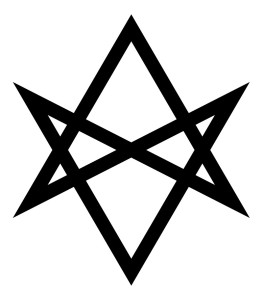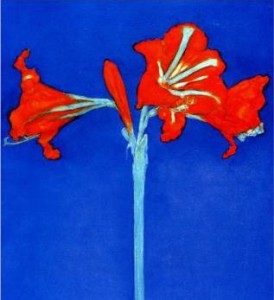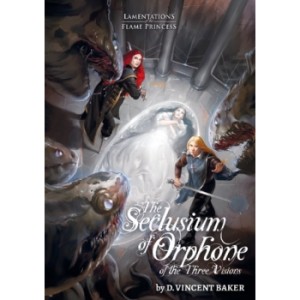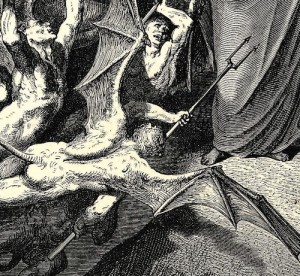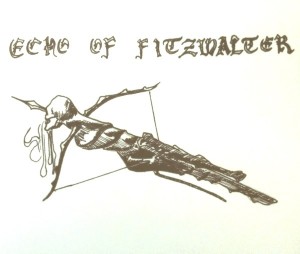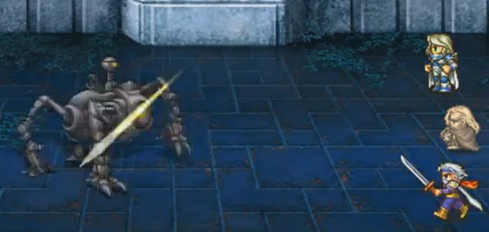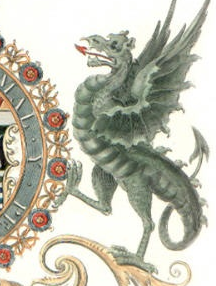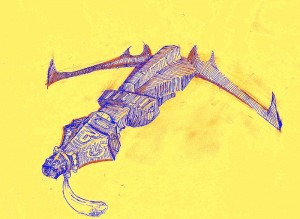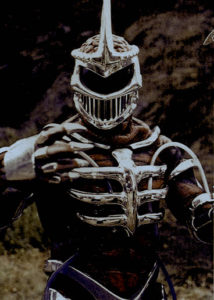
Image source (processed)
I was looking through my blog drafts folder, and came across several unfinished posts related to my Pahvelorn OD&D campaign (which has been on hold for several years now). This is one of those posts. If it feels somewhat out of left field, that is why. This is a fun item though, so I thought it still worth sharing.
In that game, one faction is a group of borg-like demonic invaders. They look like a mixture between Lord Zedd, Giger’s alien, and matte black humanoid crabs. They are highly organized, militaristic, and woven into a psychic mesh which allows telepathic communication. They cannot speak human language but at some point during the game one of the adventurers managed to communicate telepathically with a drone that had been separated from the central consciousness. I described the experience as a series of tangled visual signs and from then on the players referred to the creatures as Tangles. A tangle drone’s exoskeleton can be worn as armor if properly extracted.
There are two varieties of tangle armor, soft-shell and hard-shell.
- Soft-shell: AC as medium armor, 5 [14].
- Hard-shell: AC as heavy armor, 3 [16].
(Note that in this game, no AC, even for monsters, is ever mechanically better than plate.)
Anti-Disintegration. Wearers of tangle armor are immune to disintegration.
Rejuvenation. Following combat, tangle armor will heal 1d6 points of damage. This only applies to damage just suffered. This causes a head rush in a human wearer.
Pincer-Claws. Tangle armor appendages count as armaments (standard 1d6 damage). They also have 18 strength in terms of grip (think alligator jaws: easy to hold closed, hard to pry open). These pincers surround hands but do not interfere with standard hand uses.
Creepy. Wearing tangle armor results in a functional charisma score of 3 when interacting with civilized others.
Receptive. Wearers suffer disadvantage (such as -4 penalty) when resisting psychic attacks.
Wearing. To put on a suit of tangle armor safely, cast the bind exoskeleton spell. Otherwise, get naked, slip inside, and save versus stone. If the saving throw fails, roll 1d6:
- Armor wearer is psychically attached to the tangle hive consciousness.
- Armor wearer becomes unable to perform aggressive acts toward creatures with 4 or 6 legs/arms.
- Armor wearer’s mouth and larynx are replaced with a mandible-like mechanism that prevents speech. Spells may still be used though interpretive dance. This result is permanent even if the armor is successfully removed later.
- Armor wearer secretes colony spores whenever resting. There is a 1 in 6 chance that the resting place will become a new hive shortly thereafter. This hive is autonomous from the mother hive on tangle world.
- Armor wearer becomes a beacon. There is a 1 in 6 chance that a gate will open to tangle world every time the armor wearer rests. The gate will be located in a secluded area within one mile of the rest point and will remain open for one week.
- The armor fully infiltrates the wearer’s body, rearranging parts, integrating with organs, and improving resilience. Armor wearer gains one HD permanently and no longer requires oxygen but will collapse into a pile of disaggregated flesh if the armor is ever removed, even with a “safe” spell method.
(It may be enjoyable for the referee to keep this result secret assuming the effect would not be obvious to the wearer. But make a note somewhere to remember the per-rest checks!)
If the saving throw succeeds, putting the armor on has no side effect other than being permanently integrated with an alien exoskeleton.
Removal. Tangle armor may be removed from a human safely only with dispel evil (this destroys the armor) or remove curse (after which the armor may be worn by another). The armor may be removed forcefully or in a nonconsensual manner (if the wearer is restrained). This causes the wearer 3d6 damage (save versus stone for half). Spell-based removal does not protect the wearer from bodily disaggregation based on result 6 above.
Extraction. Defeating a tangle drone in combat damages or destroys the armor. Functional tangle armor can only be extracted from captured, living drones. Extraction kills the drone unless the extractor takes extraordinary measures.
Tangles have stats as hobgoblins with supplementary abilities consistent with the armor description above. In any raiding party, at least one drone will be armed with disintegration weaponry. Mounts and vehicles are hover platforms that can be psychically controlled. Tangles may be remote-controlled using telepathy (drones get a save to avoid, connecting to the hive mind risks alien psychic mental control and insanity).

